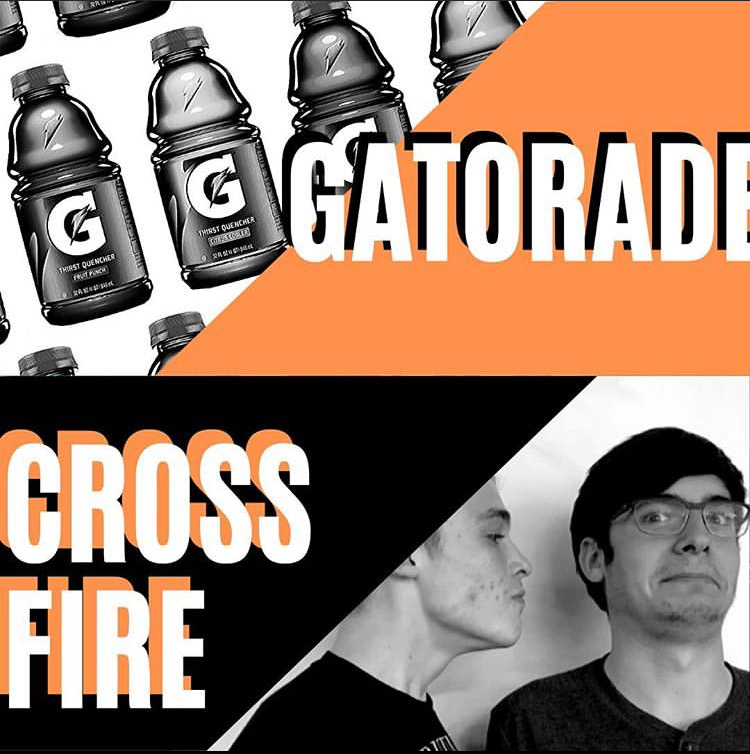CROSSFIRE: Thirst Quencher or Marketing Ploy?
Affirmative
The Athlete’s Ultimate Fuel
June 11, 1997. Delta center, Salt Lake City Utah. It’s game 5 of the 1997 NBA Finals between the Utah Jazz and the Chicago Bulls. Michael Jordan is in his prime- playing what is possibly the most important game of his career- and he’s doing it while sick with the flu. Exhausted, sweaty, dehydrated, and miserable, he still managed to rack up 38 points over 44 minutes of play time, carrying his team to a national title. During every break when MJ sat down on the bench, what refreshing and energizing beverage did he rely on to keep him going? None other than Gatorade.
Only one infamous brand commands 46 percent of the global sports drink market, across 86 countries, generating annual sales estimated in the billions. Gatorade remains a mainstay of many prestigious American athletic organizations such as NFL, NBA, WNBA, MLB, MLS and over 70 Division I colleges, according to Forbes. All of this is no surprise given its tried and true formula ability to improve the performance of athletes.
Gatorade was engineered through science, when researchers found that athletes were using electrolytes and carbohydrates during strenuous exercise and exertion, and falling ill when they were not replenishing those necessary nutrients afterwards. Gatorade has been developed and proven to rejuvenate and refuel athletes by filling that gap and supplying the nutrients and hydration necessary to keep athletes in the game and at peak performance, and has also been shown to have benefits for people who are sick and need electrolytes to fight illnesses such as many stomach viruses. Its positive effect on athletes has been backed by organizations and news outlets such as Healthline, Medical News Today, and Livestrong as well as many others, solidifying its reputation as fuel for athletes.
Gatorade is constantly improving and adding to their long list of products designed for athletes, adding new and bold flavors to their lineup, as well as items beyond the traditional sports drinks we find so familiar. Via a lab based in Florida, Gatorade has worked with athletes as well as renowned researchers and practitioners to develop products such as whey protein bars, recovery shakes, energy chews, and many more with the common goal of improving the performance and boosting the recovery of athletes around the world. They continue to improve upon the brand and lineup through extensive research, closely studying important factors in athletic performance such as the effect of internal forces, such as body temperature, and external forces, like heat acclimatization, and how they can better optimize the hydration and overall effectiveness of their products.
When it comes to sports drinks, we all know who the real hero is. Gatorade is the undeniable trailblazer of the industry that holds a legendary status in the world of sports and fitness. Flavors so classic and iconic that they have made their way into pop culture, reaching as far as collaborations with sneaker and clothing brands such as Nike. Gatorade is a staple of American athletics and has been vastly influential in the relationship between pop culture and sports, and will remain so with its effectiveness and established reputation as number 1.
Opposition
Drink Gatorade, Get Played
Here’s a piece of advice: if you see a beverage that supposedly tastes like an “Arctic Blitz,” don’t buy. Gatorade is a chemical witch’s brew with an absurdly high sodium content, nebulous artificial flavorings, and sugar syrup that can sabotage your workout. If you see Tiger Woods, Michael Jordan, or another Gatorade sponsored athlete chugging one in a commercial, remember that they’re being paid fat stacks. Let’s expose the dangers of Gatorade by breaking down the nasty ingredients in a fruit punch flavored “thirst quencher.”
First up we have our common culprits, starting with dextrose. This corn-based substance is good in small amounts, for short bursts of energy. However, just like how overconsumption of alcohol or chocolate is unhealthy, consuming dextrose in large amounts can lead to weight gain, acne, and even diabetes. Keep dextrose to a minimum.
Question for Gatorade: Buddy, how much sugar are you putting in here? 34 grams per serving? At least it isn’t artificial sugar, but you do put that in your supposedly “zero sugar” drinks… and now let’s see your salt content. Okay, salt… holdup—270 milligrams per serving?! So, here’s the deal: our body does use up a lot of sodium when it sweats, so a high salt content can make things easier for hardcore atheletes. But in most cases, when Gatorade drinkers are doing small-time exercises, this is way too much.
Now we’re getting to foods that are, as the trendies would say, “sketchy.” These ingredients aren’t revealing the whole truth. Case in point: modified food starch. This could mean any starch that has been changed in a certain way. The food starch in Gatorade could even be genetically modified, but the FDA doesn’t have regulations forcing companies to divulge that information. Oh, and we’ve also got “natural flavor.” Right now, companies can slap an “artificial flavor” or “natural flavor” label on products and call it a day without divulging the components of those flavors. All “natural flavor” means is that the flavor has an animal/plant based source. Gatorade could be getting flavors from pureed dung beetle shells, and we’d be oblivious. Hey hey FDA! Put regulatory labels on flavorings today!
Now we’ve reached the lower levels of the ingredients list, where the egregious food additives hang out. Sodium citrate, which is used to help mitigate kidney stones (among other things) in the medicinal world is… tolerable in extreme concentrations. But don’t, repeat, don’t, drink ten servings of the Gator in one sitting or else your intestines will hate you for the rest of your life.
Up next is monopotassium phosphate, which is a chemical used in fertilizers and fungicides. And—believe it or not—consumers are glug-glugging this madness like nothing else. Speaking of madness, look at Red 40. This baddie is a petroleum-based coloring that is shown to cause hyperactivity, jitteriness, and migraines (See this study in the National Library of Medicine for more information: https://www.ncbi.nlm.nih.gov/pmc/articles/PMC3441937/). The sad thing is, a plethora of modern processed foods contain this dubious dye. And finally we have glycerol ester of rosin (you already know this will be bad). The European Food Safety Authority (EFSA) has officially declared this to be unsafe as a food additive, as of 2010. Us Americans don’t have nearly the same level of regulatory stringency on our food that the EU does, but this should still be a bright-neon warning sign.
There you have it: nine unhealthy ingredients, one furrowed brow. No matter how many celebrities endorse this gunk, purchase alternative products. “Ooh but what about my electrolytes?” News flash: electrolytes aren’t just in Gatorade. They’re in Smartwater also, among other goods. It is easy and cheap to get just as much electrolyte goodness from products other than Gatorade. Avoid this poison potion: don’t let the Gator bite!
Your donation will support the student journalists of Enloe Magnet High School, allowing us to cover our annual website costs. We are extremely grateful for any contribution, big or small!

Gerbrand, alias Bran, is a fresh, energetic senior with plenty of ideas. He enjoys singing in the Enloe Chamber Choir, being respectful, and sharing...








